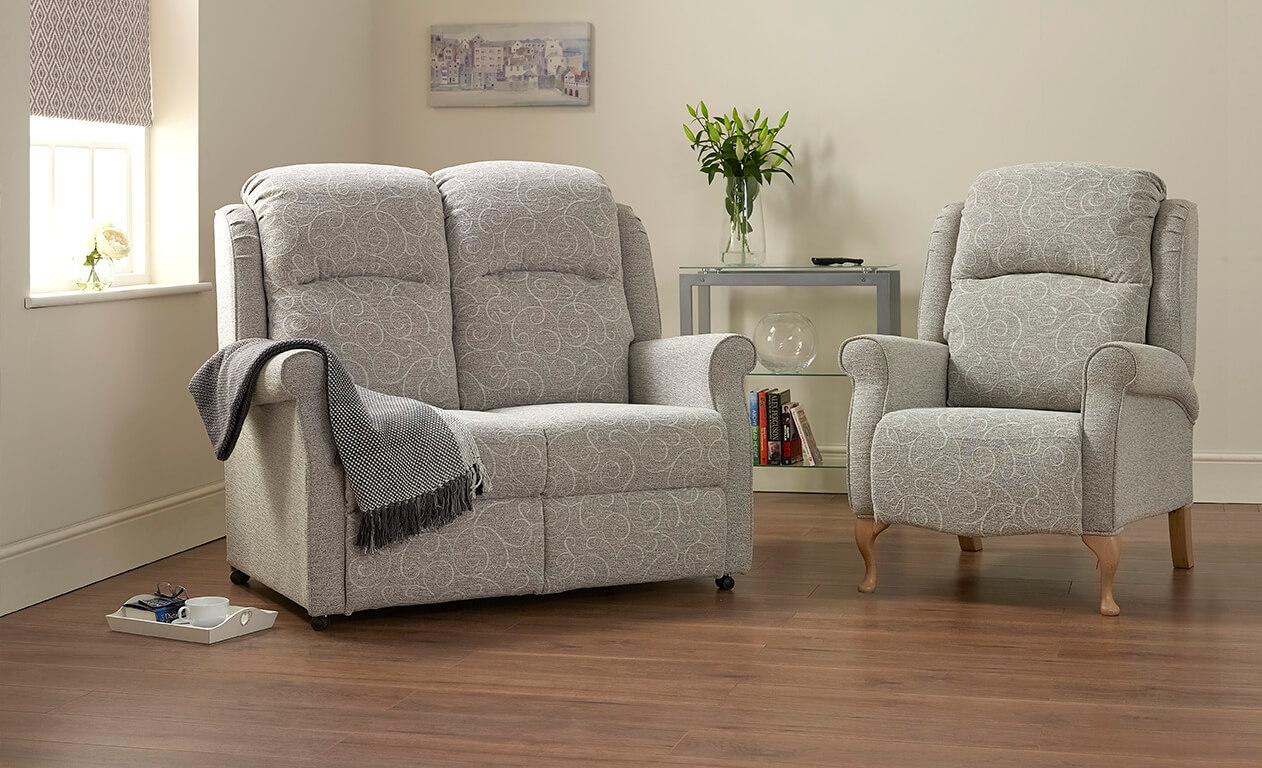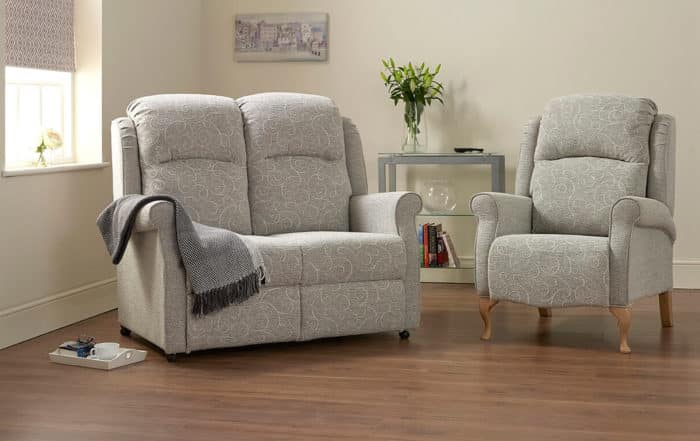Sofa, Couch and Settee – What’s the Difference?
Social Links
Do you seek to sprawl on a riser recliner sofa at the end of a long day? Perhaps you feel called to collapse on the riser recliner couch? Or maybe you’d select a sit-down on a riser recliner settee?
Whatever you choose to call it, your favourite piece of comfy furniture is probably your first port of call when you get home in the evening, and possibly a place where you spend a lot of the day as well. But just what is the difference between a sofa, a couch and a settee – or is there even one at all?
Historically, the three words evolved in different places and were used to describe different pieces of furniture with the common function of being places or things to sit on.
However, each has evolved over time and arrived at a form so similar to the others that nowadays the three terms can be used interchangeably – and the difference, if there is one, may simply come down to where you live.
Which came first?
Of the three terms, “settee” is the word with the most English origins. It’s understood to have come from the old English word setl, or settle, which referred in the Middle Ages to a long wooden bench, usually made from oak, with a high wooden back. This back may have featured elegant or elaborate carving, depending on the wealth and status of its owner, and was a common feature of furniture of this type.
Meanwhile, “sofa” is believed to be derived from the Arabic word “soffah”, and in eastern Mediterranean states it referred to a raised part of the floor, one or two feet high and covered with carpets and cushions to sit on.
The word and general design reached France by the 17th century, and from there it travelled to England where it became a feature in the houses of the wealthy and well-to-do. By the 19th century, “sofa” had become the more accepted spelling and the upholstery had become an important feature of the design.
So, what’s the difference between a sofa and a settee?
Nowadays, the Collins English Dictionary describes a sofa as “a long, upholstered seat with a back and arms”, which leaves quite a lot of scope for size, style and shape. Most definitions agree that a sofa should be wider than it is deep and therefore made for more than one person to sit on.
Of the three terms, “sofa” is the one most commonly used by manufacturers and designers, and is often the title given to furniture for a more formal setting. For example, it’s more likely to be offered to guests to sit on and have tea than to be used for curling up and watching television.
On the other hand, “sofa” is the word generally used to describe a piece of furniture that converts from a chair into a bed, in the form of a sofa bed, in which case it’s much more likely to be found in a cosy lounge room than a formal sitting room.
Since the Middle Ages, English settles have undergone a similar evolution. Over the years, manufacturers began adding padded upholstery to the seat and back panels so that modern day settees are more or less indistinguishable from what we also call a sofa – in fact in most of the UK the terms are used interchangeably.
Which one you prefer may be determined by where you live – the word “sofa”, probably because of its journey to England through France, is the more popular choice in the south of the country, while “settee” is more likely to be heard in the north of England and in Scotland.
What about “couch”?
The word “couch” is believed to have come from the French word “coucher”, which means to sleep or lie down. In France, the word “couche” was used to describe a piece of furniture with no arms or back and used for lying or sleeping on during the day, such as a bench with pillows or an elongated chair.
From this the English formed the word “couch”, which was used by Chaucer as early as the 14th century for describing a place to sleep. In the modern world, “couch” is described by the Chambers English Dictionary as “any place for rest or sleep; a kind of sofa with half a back and one raised end” and by Dictionary.com as “a piece of furniture for seating from two to four people, typically in the form of a bench with a back, sometimes having an armrest at one or each end, and partly or wholly upholstered and often fitted with springs, tailored cushions, skirts, etc”.
So, it would seem that perhaps a couch is simply a more comfortable version of a sofa, which may or may not have arms or a complete back and which users may sit or sleep on. It may refer to more informal settings, and seems to be more widely used in America than in the UK. The word “couch” can also used to describe the piece of furniture which patients lie on while being examined or treated by a psychologist or doctor.
The bottom line
It doesn’t matter if you call your favourite piece of furniture a couch, a sofa or settee – or if, like the Mobility Furniture Company, you use them interchangeably. All three conjure images of a comfortable and warm place to sit or even sleep, snuggle up with a book or loved ones or gather around the room with friends. If you have more than one, you might use different terms to distinguish one from the other, and it’s entirely up to you which word you assign to which piece.
Far more important is the quality of the item, the fabric you choose and how well it suits your needs and lifestyle. In fact, the Oxford Learner’s Dictionary lists sofa and couch as synonyms for settee – so perhaps there really is no difference after all.
*This website contains general medical information. The medical information is not advice and should not be treated as such. Read our full Medical Disclaimer here.



